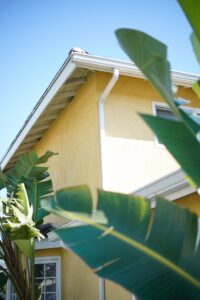
Climate change has been proved to have an impact on every element of our planet’s ecology, including the water cycle. We are more likely to experience both torrential rains and catastrophic droughts as a result of climate change. Temperature variations have a big impact on the water cycle since precipitation is so dependent on it.
Temperatures throughout the world are continuing to rise at a rapid pace. Water vapor concentrations, clouds, precipitation patterns, and stream flow patterns are all affected directly as a result of this. All of them are connected to the water cycle.
Your Gutters & Water
The water cycle involves water evaporating from the land and sea and returning to the ground as rain and/or snow. Because warmer air can contain more moisture, greater evaporation occurs as the temperature rises. The more moisture and vapor in the air, the more likely it is to get saturated, resulting in exceptionally heavy rains. Intense downpours like this may produce floods, flash flooding, and storm damage, as we’ve seen
Downspouts & Their Role
These downpours are frequently swift and violent. They release enough water to do significant harm. Rainstorms can damage your gutters in a variety of ways:
Your gutters may not be designed to manage the huge volume of water depending on their size and condition. As a result, excessive rains might put a strain on the system. Because these weather patterns are expected to persist, you may want to consider upgrading and/or replacing your gutters to prepare for future storms.
If your gutters are clogged, a strong rain like this can do significant damage to your gutters and the area below. The water from a blockage will spill over the side of the gutter instead of flowing smoothly and down the downspout away from your property. With that much water, flooding in your home and/or damage to what’s underneath your gutter, such as your foundation or pricey landscaping, is a possibility.
Heavy downpours might reveal gutter issues.

You’ll be able to readily detect parts of your gutter that aren’t operating correctly during such
strong rainstorms. It’s possible that you don’t have enough downspouts if the middle of your gutter overflows. Alternatively, your gutters may be clogged. It’s also possible that a section of your gutter is sagging or broken. If it’s spilling near the downspout, it’s a good indication that your downspout is obstructed.
It’s critical to have a gutter system that works correctly and is the correct size. It is critical to properly handle these large amounts of rain in order to safeguard your home.
Temperature Predicts
Climate change models indicate that annual-mean temperatures in the United States will climb by roughly 2-3 degrees Celsius over the next 100 years. This is also causing an increase in overall precipitation amounts. Precipitation in the United States rose by 5-10% throughout the twentieth century, and this trend is expected to continue.
The drought-stricken region is on the other side of the water cycle. Evaporation increases as the temperature rises, and the earth dries. A lot of the runoff in these instances grazes over the hard ground and into bodies of water, leaving the soil dry and adding to the drought.
If you have been noticing during recent heavy storms that your gutters aren’t performing as they should, now is the time to address these problems. As precipitation and temperatures are predicted to steadily increase over the next 100 years, preparation is important. Water damages can be costly and extremely time-consuming. Request A Quote now at The Contractors Booklist. Our roofers are true professionals and will get right to the issue and fix the problem entirely.








